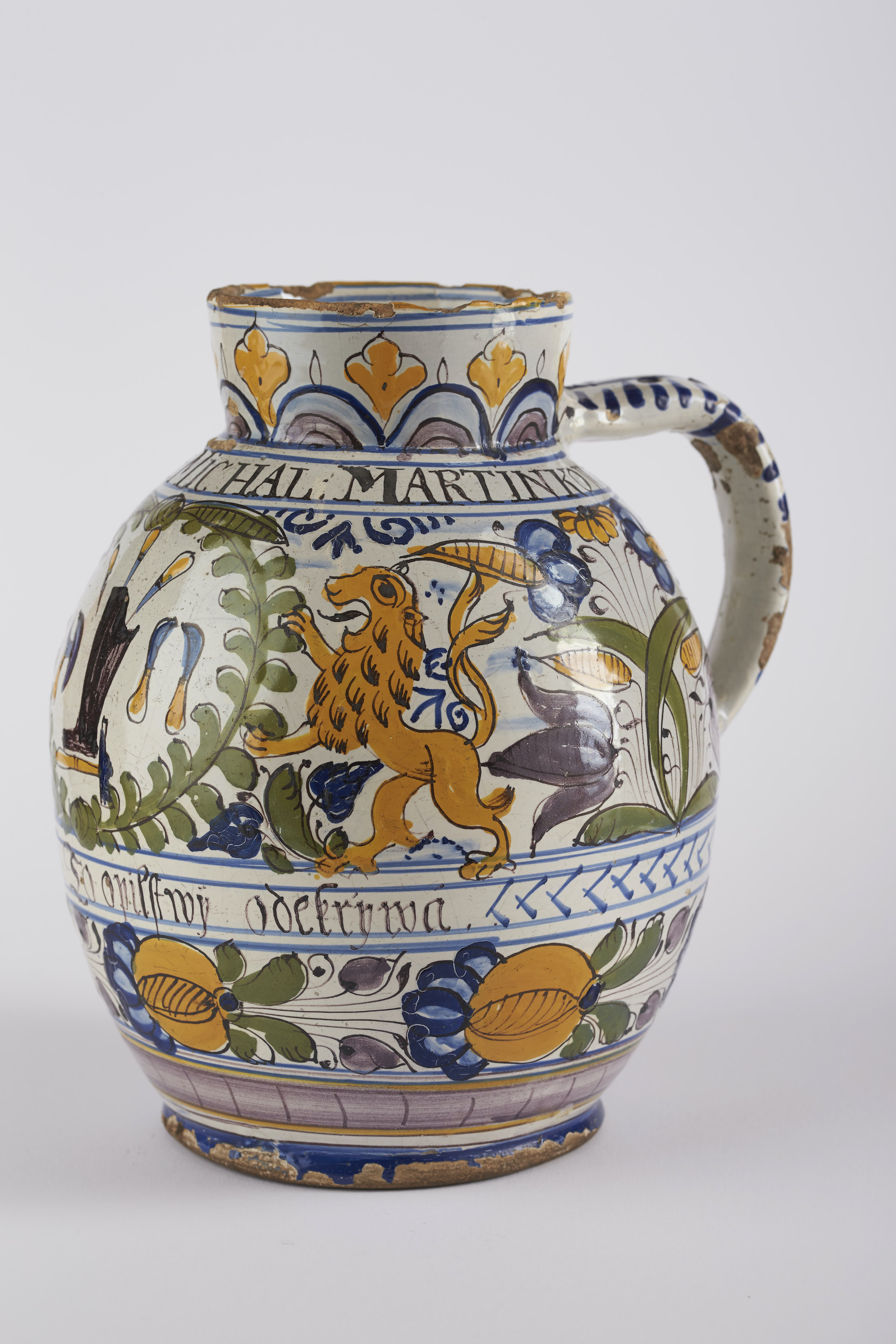This guild faience jug comes from the Slovak National Museum's Museum of History. Jugs and plates followed the tradition introduced by the Hutterites (Habans); they were Anabaptists who had settled in many villages of western Slovakia in the 16th century. Haban pottery is characterized by white, non-transparent, lead-tin glazing; floral decoration; and the use of blue, green, yellow, and purple. Red was not used by the Hutterites for religious reasons. By the 18th century, Haban majolica had increased in popularity and was distributed to other parts of present-day Slovakia. The decoration of the guild utensils was generally based on common symbolism rooted in the guild coats of arms and seals. The bootmakers’ symbol is generally a boot, supplemented by a tripod and bootmakers‘ instruments.
The New Baptists, also called the Hutterites or Habans, were members of Anabaptism, a radical Protestant movement founded in Zurich, Switzerland, in 1525. A typical manifestation of the New Baptist faith was the refusal of the believers to baptize infants and children, as those were considered too young to profess their religion. Hence, baptism was received only by adults as believers capable of believing in God and practicing their faith. The New Baptists took a radical approach to the interpretation of the Scriptures, disrespecting the Saints and imitating early Christian communities’ way of life. They lived in closed communities (in German: haushaben, hence the name Haban), living under one roof in dwellings forming up large Hutterite courtyards in some locations.
We present today's jug thanks to The Slovak National Museum's Museum of History. Have a great Monday!
P.S. Beautiful vessels were produced in many different cultures. See here also these exquisite mother-of-pearl artifacts from India!


 Unknown Artist
Unknown Artist